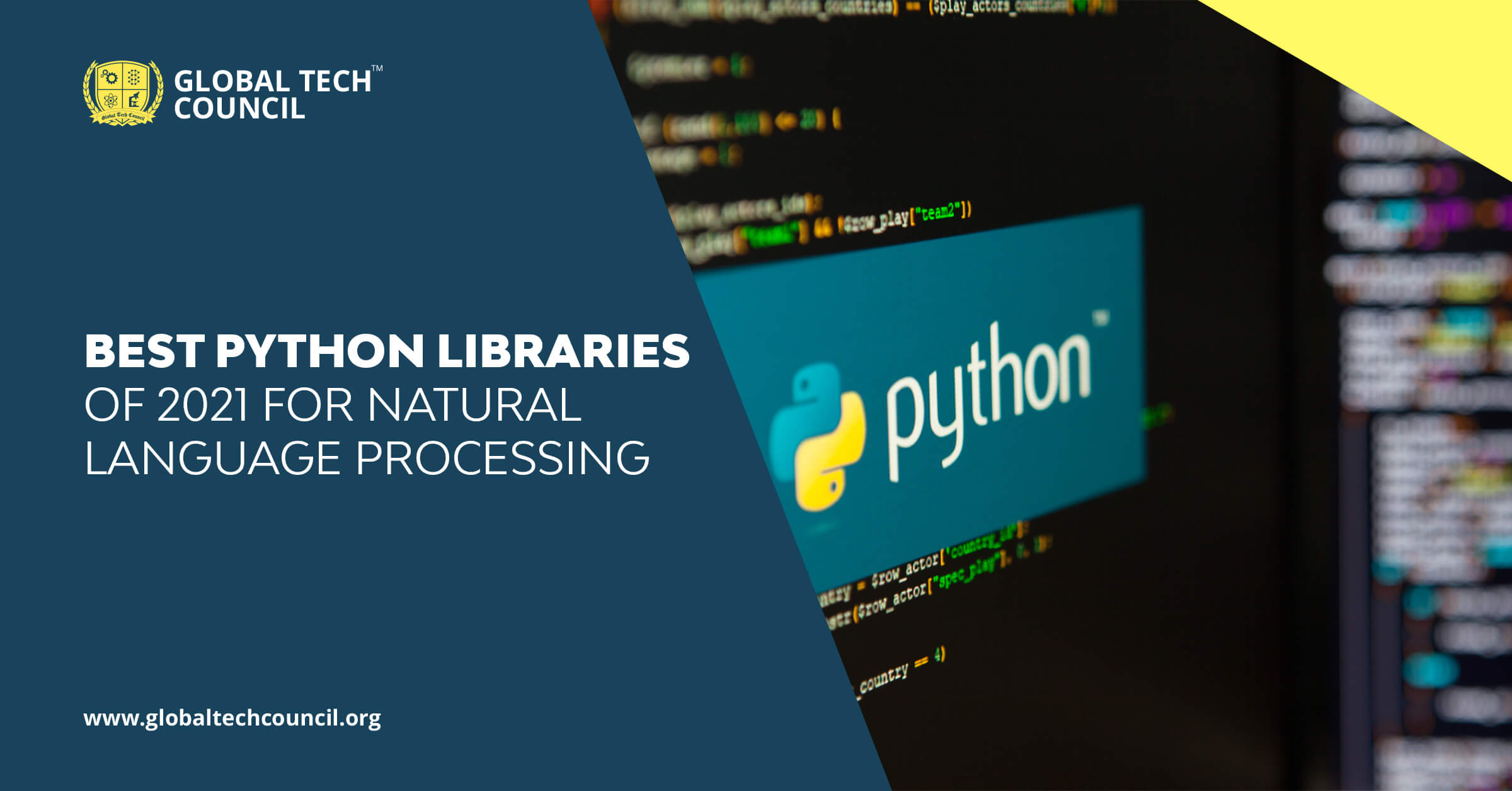
Natural language processing, abbreviated NLP, is a topic at the intersection of data science and artificial intelligence. It is mostly about instructing machines to understand human languages and derive meaning from texts at their most basic level. Text mining, text categorization, text and emotion monitoring, and speech production and identification are just a few of its many applications. This is also why Natural language processing initiatives frequently require the use of artificial intelligence.
We’ll look at five of the best Python libraries for natural language processing modules today. While performing any Python programming, these libraries allow you to create an automatic NLP service, from gathering data for your model to displaying the outcomes.
Let’s start-
SpaCy
SpaCy is a Natural Language Processing package for Python that is open-source. It’s primarily intended for use in the workplace, where it may create real-world initiatives and manage massive amounts of text data. Moreover, sixty languages are supported by spaCy, which has prepared pipelines for various languages and activities. Because this toolset is designed in Python and Cython, it is quicker and more accurate when dealing with massive amounts of text data.
The following are a few of SpaCy’s functionalities:
- It offers highly trained transformers, such as BERT.
- Recognizing named entities
- Compiling for dependencies
- Separation of sentences
- Lemmatization
- Analytical morphology
- Linking of entities
- Categorization of text
- It’s a lot quicker than most other libraries.
- Identification of parts of speech
- It includes 55 pipelines that have been certified in even more than Seventeen languages.
Stanford CoreNLP
Stanford CoreNLP is a collection of human language development tools. It refers to applying linguistic analysis toolkits to a chunk of text as quickly and effectively as possible. In just a few programming codes, CoreNLP can derive a vast array of text attributes. Because CoreNLP is developed in Java, it necessitates the installation of Java on your machine. Despite this, it includes programming user interfaces for several popular computer languages, especially Python.
Sentiment classification, POS tagger, named entity recognizer (NER), parser, pattern learning for bootstrapped, and coreference resolving system, to mention a few, are all included in the program. Aside from English, CoreNLP supports four languages: French, Spanish, German, Chinese, and Arabic. Sentiment analysis, WordNet integration, parsing, and n-grams are just a few of the tools. Stanford CoreNLP is compatible with Mac OS X, Windows, as well as Linux.
Textblob
Textblob is a fully accessible NLP package for Python, namely Python 2 & 3. It is based on the Natural language toolkit. It has APIs for identifying parts of speech, extracting noun phrases, sentiment monitoring, categorization, and interpretation. Furthermore, its properties can be handled as strings in Python and trained in natural language processing. Several data scientists utilize Textblob for experimentation purposes because of its compact features. It is suitable for newbies. It is a must-have educational tool for data scientists who are just getting started with the Python crash course and Natural Language Processing. It has a simple user interface to assist newcomers.
Let’s see some of its features:
- Analyzing people’s feelings.
- Frequency of words and phrases
- Part-of-speech marking.
- Parsing.
- N-grams.
- Tokenization.
- Categorization.
- Separation of noun phrases.
- Corrections to the spelling.
- Integration with WordNet.
AllenNLP
It is by far the finest natural language processing tool available based on PyTorch libraries and tools. It’s excellent for use in industry as well as academics. It grows into a real solution for a broad spectrum of text analysis. AllenNLP comes with an intuitive SpaCy toolkit for data preprocessing. The AllenNLP toolkits also deal with the lay cycling process on their own. AllenNLP’s most important feature is that it is simple to use.
Unlike other Natural language processing systems that feature many components, AllenNLP simplifies the natural language approach. As a result, you’ll never get confused in the output reports. It’s a fantastic tool for newbies. Event2Mind is AllenNLP’s most stimulating model. You can use this application to look at client motivations and responses, crucial for product or service development. AllenNLP is appropriate for both simple and challenging jobs.
Natural Language Toolkit
Natural Language Toolkit is the most popular Python package for working with human language information. It includes a suite of text pretreatment libraries for identification, parsing, categorization, separating, tokenization, logical thinking interfaces for NLP tools, and an ongoing chat discussion.
The following are a few of the functionalities given by the Natural Language Tool Kit:
- Separation of Entities.
- Argumentation based on semantics.
- Part-of-speech marking.
- Tokenization.
- WordNet.
- Originating.
- A collection of categorization tools for text analysis.
- Parsing.
- Wrappers for high-performance NLP libraries.
The NLTK library is available for Windows, Mac OS X, as well as Linux. The most astonishing thing is that Natural Language ToolKit is a community-driven, open-source project. It is appropriate for all types of coders, including students, instructors, engineers, scientists, and experts in the industry. NLTK is available in Python versions 3.6 and above. It does, however, have significant drawbacks. Matching the requirements of production consumption is long and frustrating. It’s a bit of a high learning curve.
Conclusion
Although the majority of all these Python libraries appear to handle similar natural language processing activities, they differ in terms of capability, methodology, and applications. The task at hand mainly determines the NLP toolkit use. If you desire to learn more about Python libraries and get a Python certification, several Python courses are available on the internet.